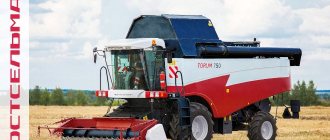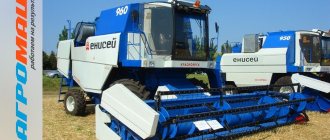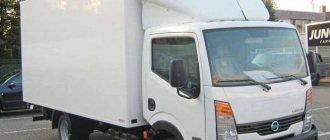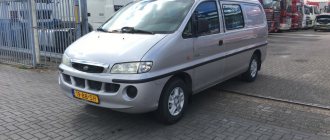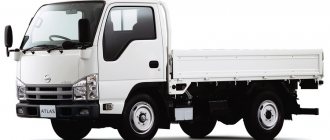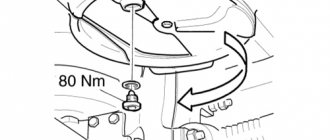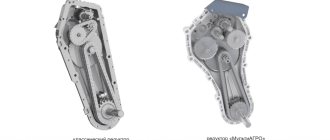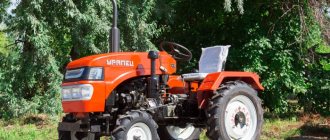Beet harvesting methods and agrotechnical requirements
Modern beet harvesting technologies include harvesting the tops by loading them into vehicles or scattering them across the field, extracting the roots and cleaning them from soil and plant residues.
Mechanized beet harvesting is carried out using combines, beet lifters and other machines. Cleaning methods. The following methods for harvesting beets are used:
- single-phase, or combine, when beets are harvested using combines. In this case, in one pass of the combine, the tops are cut and thrown into a vehicle or onto the field, and the root crops are dug up, cleaned and placed in a windrow;
- two-phase, or separate, in which the tops are cut and fed into the vehicle by topping machines or scattered across the field as green fertilizer, and the root crops are dug up, cleaned and loaded into the vehicle by root harvesting machines. Beet lifters are used to dig up the roots of sugar beets and other root crops sown with a row spacing of 45–60 cm. They are designed for digging up two to three rows of sugar beets and are equipped with single-acting digging arms. Cut tops are used for feed purposes - they are not inferior in nutritional value to oats and represent a large reserve for increasing the volume of feed procurement. From 1 hectare of beet crops you can get over 300 centners of tops.
Depending on the organization of delivery of root crops from the beet harvesting machine to the beet receiving point, there are in-line, transshipment and in-line-transshipment harvesting methods.
The flow method of harvesting involves the use of combines for simultaneous harvesting of tops, digging, cleaning and loading root crops into a bunker. The technological equipment of such machines includes a rotor for chopping tops, a root trimmer, disk or fork diggers, cleaning augers or rotors, as well as conveyors. The operation of all nodes is consistent and high performance.
With the transshipment method, roots from the harvesting machine are unloaded onto transshipment sites and from there transported to a receiving point. As a result of additional tedding during unloading and loading at transfer sites, the roots are completely cleared of soil. With the flow-transshipment method, part of the roots is transported to sugar factories directly from harvesting machines, and the other part is transported to transfer sites.
Beet loaders are used to load roots from piles into vehicles.
Methods for harvesting tops and root crops are largely related to varietal characteristics, the shape of root crops (Fig. 1) and their location relative to the soil surface. When breeding plants, they try to obtain varieties and hybrids of a leveled shape with a lesser tendency to stick to the soil and height-aligned root heads.
Rice. 1. Typical shape of beet roots: a – taproot; b – olive-shaped; c – cylindrical; g – spherical
Agrotechnical requirements. When harvesting with a combine, the roots and tops must be completely collected. The total contamination of roots should not exceed 10%, including tops - 3%. The mass of cut heads extending into the tops should not exceed 5% of the total mass of the roots. Losses of tops should not exceed 18%, and soil contamination should not exceed 0.5%. The number of roots with deep damage should not be more than 12% by weight.
The thickness of torn root tails should not exceed 1 cm; the presence of no more than 3% of roots with thicker tails is allowed. With a low and oblique cut, 10–15% of roots are allowed, with highly trimmed or uncut tops - 5%.
If agrotechnical requirements are not met, the weight loss of root crops can reach 25–32%.
Owner reviews and prices
Each model of carrot harvesters has its own characteristics, from the method of collecting root crops to the method of unloading. For example, the picking section of the CM1000 combine from Asa-Lift is equipped with floating drive technology, which ensures high-quality pulling of root crops (carrots, beets, parsnips) and cutting of tops. The owners also note that this model is equipped with a convenient chute for unloading the finished product.
The EM-11 combine has great wear resistance, and the harvesting quality meets the standards. The main condition for good cultivation of the territory is the quality of the tops: it should not be laid down and quite large. Under this condition, the tops of most root crops are trimmed correctly.
You can buy a new carrot harvester in Russia from official dealers. The price depends not only on the manufacturer, model and its configuration, but also on the region where the device is purchased. For example, the sale of a new Dewulf P3K Profi carrot harvester in the Moscow region costs 1,300,000 rubles. A profitable option is to purchase a used combine: EM-11 can be found at a price of 350 thousand rubles.
Have you worked with a carrot harvester? Which manufacturer seems most reliable to you?
Top removal machines
The principle of operation of tops harvesting machines can be based on cutting tops with a rotor (Fig. 2, a), knocking down with an impeller (Fig. 2, b) or trimming with a rotating disk knife, the copier of which maintains a constant cutting height (Fig. 2, c).
Rice. 2. Main types of top-cutting devices: a – rotary; b – bladed; c – disk with copier
Much attention is paid to accurately maintaining the cutting height with the root trimmer, since violation of the specified height leads to a loss of 6–9% of the crop.
The BM-6B tops harvester is designed for cutting tops of sugar beets sown with row spacing of 45 cm. The machine simultaneously cuts tops from six rows, collects them and loads them into a vehicle.
The main working parts are: a copying device, a cutting apparatus with a copier, a receiving conveyor with a beater, a tops elevator, tops throwing drums and a root head cleaner.
The copying device guides the top-cutting devices along the rows.
The top cutting apparatus consists of copying mechanisms and disk knives (Fig. 3).
Rice. 3. Top cutting machine with a comb copier: 1 – copier; 2 – disk knife
The device is hinged to the main frame and rests on a support wheel. The copier is made in the form of a comb with seven shaped stripes, which are connected to a stand attached to the bracket through a parallelogram suspension.
Disc knives are installed vertically so that they can fall below the soil level and rise above the heads of roots located high in the soil. The height of the cut is adjusted by changing the gap between the copier and the knife blade vertically, and the quality of the cut is adjusted by changing the same gap horizontally. The top cutting device is equipped with smooth or segmented knives for working in heavily clogged areas.
The root head cleaner is hinged at the rear of the machine. It is a rotating shaft on which rubber whips are attached.
The workflow proceeds as follows. As the machine moves, the copier automatically guides the machine along the rows. The support wheels follow the soil relief between the rows and support the top-cutting devices at a given height. The copiers, meeting the root heads, copy their position in height, simultaneously moving the knives of the top-cutting apparatus. Rotating knives cut off the root heads with tops and the blades throw them onto the receiving conveyor.
Next, the tops are sent to the vehicle using a beater, a loading elevator and top-throwing drums. At the beater and loading elevator, the tops are shaken up, and soil particles are released from them at the same time. The head cleaner uses rotating rubber whips to remove remaining tops from the cut roots. The whips are installed so that they hit the root heads and pass in close proximity to the soil.
Adjustments. The topper is controlled by an automatic row control device, a topper, a head cleaner and safety clutches.
The automatic row movement control device is adjusted so that the neutral position of the copier-driver and the spool coincides. To do this, the direction of the drawbar of the topping machine must coincide with the longitudinal axis of the unit, and the gaps between the feathers of the copier-driver sections must be located exactly opposite the axes of the cutting devices.
The top-cutting apparatus regulates the position of the knives relative to the soil surface, as well as the vertical and horizontal gaps between the copier and the knife blade. It should be remembered that in areas with larger roots, the vertical and horizontal gaps between the edge of the knife and the copier are set larger than in areas with smaller roots.
The quality of work of the top-cutting apparatus largely depends on its settings. When setting up the apparatus, it is necessary to achieve roots that do not require manual purification, with minimal waste of mass from the cut heads.
The tops cutting device has four adjustments to obtain high-quality pruning:
- installation of knives relative to the soil level is done using the support wheel screw. When the screw rotates, the entire frame of the apparatus and with it the knives are lowered or raised relative to the soil level;
- adjustment of the vertical gap between the copier and the knife blade is done by a screw rod having left and right threads; At the same time, the locknuts are released. When the screw rod rotates clockwise or counterclockwise, the copier lowers or rises relative to the knife due to the rotation of the articulated parallelogram. After each change, the locknut gap must be tightened;
- changing the horizontal gap between the copier and the knife blade - to do this, you need to loosen the nuts on the copier stand and move the copier along the oval holes in the desired direction;
- vertical correction - automatic increase in the vertical gap between the copier and the knife blade when the copier and knife are lifted up. The vertical correction is equal to the difference between the heights of lifting the copier and the knife from the lower position to the upper one. Thanks to the vertical adjustment, a thicker part of the head is cut off at high roots, and less at low roots. The more the root protrudes above the soil level, the larger part of the head must be cut off. Therefore, the vertical correction should be maximum. Changing the vertical adjustment is achieved by moving the screw nut hinge to one of the holes in the lift lever.
Types of mechanized equipment for harvesting sugar beets
Depending on their aggregation with the traction element, beet harvesters can be self-propelled or trailed. The former, as a rule, are equipped with tops collectors. According to leading technology they are:
- terminating;
- with a preliminary cut.
And different brands on the market are considered optimal for their types of machines.
Root harvesting machines
With the technology of separate harvesting of beets, the roots are dug up using self-propelled or trailed root harvesting machines.
The KS-6B self-propelled root harvester is designed for harvesting the roots of sugar beets sown with row spacing of 45 cm, and works in conjunction with the BM-6A tops harvester. The machine digs up the roots, cleans them of impurities and immerses them in a vehicle moving nearby.
Device. The KS-6B machine is made in the form of a chassis on which a set of working parts, mechanisms and additional devices is hung (Fig. 4). The welded supporting frame of the chassis rests on the axles of the drive and steered wheels. The chassis contains an engine, a hydraulic and electrical system, a variator and a cabin. The main working units of the machine are diggers 2, auger cleaner, elevators, conveyors, and a lump crusher.
Rice. 4. Scheme of the technological process of the KS-6B root harvesting machine: 1 – guide wheels; 2 – digging device; 3 – screw cleaner; 4 – longitudinal elevator; 5 – horizontal belt conveyor; 6 – lump crusher; 7 – unloading elevator; 8 – vehicle
The diggers consist of two steel disks installed at an angle. In the middle part of the axle, a stand is welded, which is attached with clamps to the beam of the movable frame. A gearbox with a pair of bevel gears is mounted on one of the digger disks. The distance between the discs in a narrow place should be 30–45 mm. It is adjusted with special washers depending on the size of the roots. The beater device consists of a gearbox and shafts with beaters.
Regulating pads are installed on the beater blades.
The screw cleaner consists of four screws, made in the form of cylindrical drums with a screw winding, and two rollers. The augers and rollers rotate in the same direction, while the roots move towards the longitudinal elevator.
The longitudinal elevator is a rod sheet with scrapers and consists of two parts. The upper part with the drive shaft is attached to the supporting frame and hopper. The lower part is connected to the movable frame by adjustable rods. An elastic shield is placed above the elevator canvas to support the roots from rolling down.
The root hopper is located at the rear of the machine and includes a horizontal belt conveyor, a lump crusher conveyor and an unloading elevator. A rubberized apron is installed on the back wall of the hopper to protect the roots from damage when falling.
The horizontal belt conveyor is used to receive roots from the longitudinal elevator and feed them to the crusher conveyor or unloading elevator. It is a polyvinyl chloride tape with guide protrusions covering the driving and driven drums. The conveyor has a reversible drive. When the belt moves in one direction, the roots enter the conveyor-pulverizer, and in the other - to the unloading elevator.
The lump crusher is made in the form of four shafts with cams. Three-blade cams are mounted on the first three shafts, rotating at the same frequency, and round cams are mounted on the fourth. The lump crusher shafts are driven into rotation from a planetary gearbox through a chain drive with a safety clutch.
The unloading elevator is located in the side wall of the bunker. Its upper part is mounted on a rotating frame, which serves to adjust the elevator in height and move it to the transport position. The unloading elevator blade is driven by a chain drive with a counter drive from a planetary gearbox.
The technological process of the machine is carried out as follows. Using automatic guidance, the machine is guided along the rows to be harvested. The discs of the digging device, due to the angle of installation and rotation, squeeze the root crops out of the soil, and they are thrown with beaters onto the augers of the cleaning device. The augers, in cooperation with the rollers, transport the root crops to the center, separating the soil, and transfer the mass to the longitudinal elevator. From the longitudinal elevator the mass enters the horizontal belt conveyor. If the roots are sufficiently cleared of soil lumps, the conveyor is adjusted to move in such a way that it transfers the root crops to the unloading elevator, from which they enter the vehicle. If additional post-cleaning is necessary, the mass from the horizontal conveyor is sent to the clod breaker, the rotating cams of which break up soil lumps and carry out post-cleaning of root crops. After the clod crusher, the tubers are loaded into a vehicle by an unloading elevator.
Adjustments. Depending on the working conditions, the digging depth is adjusted by changing the relative height of the disk excavators. The intensity of cleaning is regulated by the height of the rollers relative to the screws. Depending on the strength of the soil clods, the required operating mode of the clod crusher is selected (4 options).
The MKK-6 self-propelled root harvesting machine is designed for harvesting fodder root crops, and modifications MKK-6-02 and MKK-6-04 are designed for harvesting sugar beet roots. The tops are preliminarily removed from the roots using a tops harvesting machine. The machine provides high-quality root harvesting in an in-line or transfer method. Losses do not exceed 1.5%.
The machine consists of a root harvesting part and a tractor mounted on it, from which the drive wheels, the rear linkage mechanism and the front axle used in the machine are removed (left with the machine). The root harvesting part includes a supporting frame, front steered and rear drive axles, a row control system, left and right diggers with diggers, root guides, a beater shaft and a receiving conveyor, auger, longitudinal, transverse and unloading conveyors, a hydraulic and electrical system. Root digging units for fodder beets – disk diggers with an active beater shaft; for sugar beets - an active fork with a root picker.
A machine guided along the rows digs up and selects root crops, cleans them of soil and plant debris and loads them into a nearby vehicle. The unloading conveyor provides a smooth change in the height of loading root crops from 2.0 to 3.5 m.
The machine's row control is automatic. The MTZ-80 tractor mounted on the machine frame is used as an energy source. After finishing beet harvesting, the tractor can be removed from the machine and used for other agricultural work.
The RKM-6 root harvester has a similar device. It can be equipped with various digging bodies (RKM-6 – rotary-fork and disk, RKM-6-01 – rotary-fork, RKM-6-02 – disk working bodies, RKM-6-03 – working bodies for harvesting fodder root crops) .
Rotary fork type diggers are recommended for harvesting mother beets and sugar beets, while disc diggers are recommended for sugar beets in waterlogged or hard soil conditions.
The trailed root harvesting machine MKP-6 is designed taking into account the conditions of the Republic of Belarus and is intended for harvesting the roots of sugar and fodder beets sown with a row spacing of 45 and 60 cm, their purification and loading into a vehicle. It is aggregated with tractors of class 1.4.
The machine consists of a frame supported by four wheels, excavating working parts, a separating device, a longitudinal elevator, a bunker with a separating hump and a loading elevator. Distinctive features are a trailed version and disc one-sided digging bodies. The specific fuel consumption when harvesting beets using the MKP-6 machine is 25% lower compared to the serial KS-6B machine.
To harvest fodder root crops, diggers , which dig up, clean and load root crops into vehicles. Compared to manual cleaning, labor productivity increases by more than 8 times. The depth of travel of the digging working parts of these machines should be 8–10 cm.
Beet loaders are used to load roots into vehicles.
The self-propelled beet loader SPS-4.2 has powerful cleaning elements and high productivity. The loader solves the issue of drive in a fundamentally new way by installing the tractor on the loader frame, which improves its grip and makes it possible to use the tractor as an energy base for the loader throughout the year. To increase the cleaning ability of the working parts, the loader uses a root crop dispersal device that evenly loads the auger cleaner. The beet loader has high productivity, high maneuverability and maneuverability, as well as good controllability.
Holmer beet harvester - machine description
One of the most famous models of this brand is Holmer Terra Dos T4-40. This self-propelled machine successfully combines reliability and high efficiency when working in areas of any complexity.
The beet harvesting model includes a reliable Mercedes-Benz internal combustion engine. It is distinguished by a solid reserve of torque, endurance and high repairability. To save fuel, the machine is equipped with a hydraulic flow distributor. Their operation can be adjusted using electronic control.
The chassis is represented by front and rear axles. They are driven by cardan shafts. Both axles are equipped with a transverse differential lock.
Model specifications include:
- power – 626 l. With.;
- fuel tank capacity – 1150 l;
- bunker capacity – 32000 = kg;
- turning radius – 7.95 m;
- weight – 22 tons.
The cabin is recognized as one of the best in the “comfort” category. The driver has the opportunity to control the car using a color touch screen and a comfortable armrest.
Ropa beet harvester is the most productive in its class
The German series of sugar beet harvesting machines is represented by industrial, especially large-sized equipment for agro-industrial complexes. Its average characteristics can be considered using the example of the latest modification of the euro-Tiger V8-4:
- bunker – 40 cubic meters;
- eight-cylinder Mercedes engine with 598 hp;
- hydraulics for axial load distribution;
- triaxial;
- Emission standard according to European standard 3b.
Advantages:
- Fuel economy;
- Ease of maintenance for both long and short fields;
- Automatic control and monitoring of all systems;
- Wide tires to level ground pressure;
- Excellent shock absorption;
- High wear resistance.
